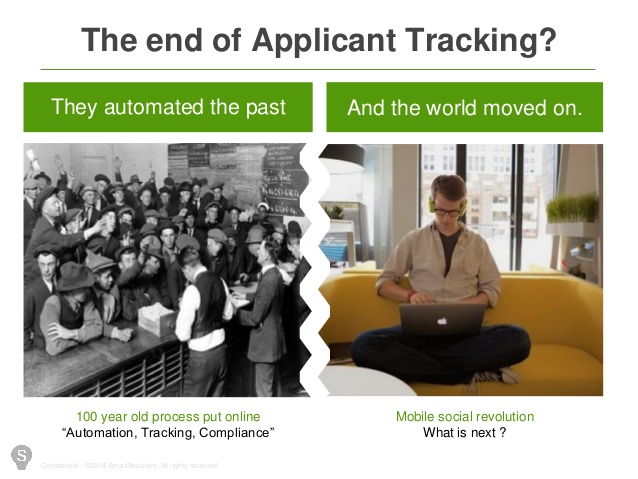Relationship building has always been a key part of any recruitment process. But today technology has shifted the focus as the process becomes increasingly social. Organisations who don’t keep up with the pace and direction of these social recruitment changes are going to get left behind in their search for top talent.
CV Black hole
Despite high levels of unemployment recruiters and hiring managers bemoan the lack of the right, top quality candidates. Jerome Ternynck CEO of Smartrecruiters  suggested that the mis-use of A.T.S. has reduced the possibility for developing relationships, leading to the infamous CV black hole. Control, compliance and storage have become the overriding criteria, rather than relationship management to engage and close the best candidates.
suggested that the mis-use of A.T.S. has reduced the possibility for developing relationships, leading to the infamous CV black hole. Control, compliance and storage have become the overriding criteria, rather than relationship management to engage and close the best candidates.
Many companies forget the candidate experience, with an estimated 91.4 % of unqualified candidates reporting zero contact beyond the automated acknowledgement of application receipt. Candidates cite the lack of any contact at all as biggest frustration of all. A huge number of potentially excellent candidates simply disappear into the ether, generating what Bill Boorman referred to as the “Employer Bland”
Social Media
At one time the terms applicants and candidates were used interchangeably, very often with an applicant becoming a developed candidate following a screening process. Social recruitment makes the distinction far more fluid. This has a new significance not just for job seekers, but recruiters and hiring managers. Many employers now look at the public and social media profiles of potential employees as part of the vetoing process, which can highlight much about the personalities and characteristics of any candidate. An employer endorsement in the public domain, adds increased value.
Talent tipping point
Today, successful social recruitment is about marketing, collaboration and relationship building. At #HRTEchEurope, Bill Boorman referred to this shift as the Talent Tipping Point. This is defined as the optimal point at which an organisation reaches the ideal number of connections across various channels to meet future hiring requirements. Formal processes are no longer necessary to reach that level. Social media platforms from Facebook career pages, Twitter followers, web site subscriptions or LinkedIn Groups and company pages all make strong contributions. These searchable data points make it easier for companies to identify potential employees in a more effective and timely way, reducing the number of untargeted applicants and increasing the number of targeted candidates.
From a job seeker’s perspective there are now have many different ways to learn about the culture of a target company. Organizations can also create multiple opportunities to manage candidate expectations in the hiring process.
According to Boorman, the average candidate apparently now follows a company for 7 months, with as many as 40 connections to an organisation. They are increasingly connecting with companies via LinkedIn and other social communication channels, Fan pages, Twitter accounts etc. So for job seekers and companies alike, developing a relationship is becoming increasingly important to make the shift from applicant to candidate.
Previous applicants
With an improved candidate experience, all previous applicants become potential future candidates. The creation of an effective candidate C.R.M. system (treat your candidates as you would a customer) companies amass significant qualified information on individuals who have interacted with the company at one or more levels. If a candidate experience has been good, even if the outcome is not positive, the candidate could well be interested in engaging in another process. 60% of candidates are never asked to provide feedback on their screening or interview experience so most organisations have only a limited idea of how they are perceived.
Add company alumni to this group and the possibility of “returnships” to people who have taken parenting leave and left the organisation, then the reach of any organisation is extended.
Savvy companies make a policy of creating career information for every demographic – past and present employees as well as potential ones.
So how prepared are you for social recruiting? Get in touch now to strengthen your talent pipeline.






Pingback: The Best of April